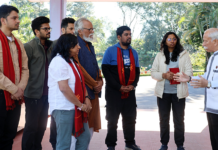Monday Musing
[ M Doley ]
Mega dams have always been criticised by experts because of their negative and immitigable environmental and social impacts. You build mega dams, there will be mega damages!
Dams can bring both benefits and problems, but problems greatly outweigh the benefits. Although hydropower is said to be a clean and green source of energy, a closer look reveals that it is far from clean and green.
Dams always have a huge impact on human existence and can be extremely harmful to local human populations in a number of ways. Dams cause huge losses of forest and farmlands and soil erosions. Aquatic species, particularly fishes, are vulnerable to the impacts of dams.
Much has been written by experts on mega dams.
India is the third largest dam builder in the world. According to an article published on the ‘India water portal’, the construction of 4,300 large dams has displaced more than 44 lakh people across India. There are thousands of such displaced people struggling to lead a decent life.
The Hirakud dam, the oldest dam in the country, displaced more than 1.5 lakh people, and the Bargi dam in Madhya Pradesh has affected 162 villages and has completely submerged about 82 villages.
The construction of the Sardar Sarovar dam displaced more than two lakh people in Gujarat, Maharashtra and Madhya Pradesh.
But we still the need hydropower as energy is crucial for economic development. The state government envisages hydropower as a source of energy that could transform the state.
The state government has signed memorandums of agreement [MoA] with three power developers to execute 12 stalled hydroelectric projects. Indeed, this is a significant move towards harnessing the state’s hydropower potentials.
The projects, with a cumulative installed capacity of around 11.52 GW, have been allotted to the North Eastern Electric Power Corporation Ltd (NEEPCO), the Satluj Jal Vidyut Nigam (SJVN), and the National Hydroelectric Power Corporation (NHPC).
Power and New & Renewable Energy Minister RK Singh asserted that once the projects are implemented, Arunachal Pradesh will become a rich state.
“The per capita income of the state will become more than that of Maharashtra and Gujarat,” Singh said.
However, several organisations and anti-mega dam activists have strongly opposed the signing of the MoAs. They allege that the MoAs have been signed without the knowledge of the directly affected people.
They are demanding that their voice and concerns be heard and addressed before any further steps are taken.
The question is, will the government pay heed to their concerns?
The projects to be developed are the Tato-II HEP (700 MW), the Tato-I HEP (186 MW), the Heo HEP (240 MW), the Naying HEP (1,000 MW), the Hirong HEP (500 MW), the Etalin HEP (3,097 MW), the Attunli HEP (680 MW), the Emini HEP (500 MW), the Amulin HEP (420 MW), the Mihumdon HEP (400 MW), the Subansiri Upper HEP (2,000 MW) and the Subansiri Middle (Kamala) HEP (1,800 MW).




